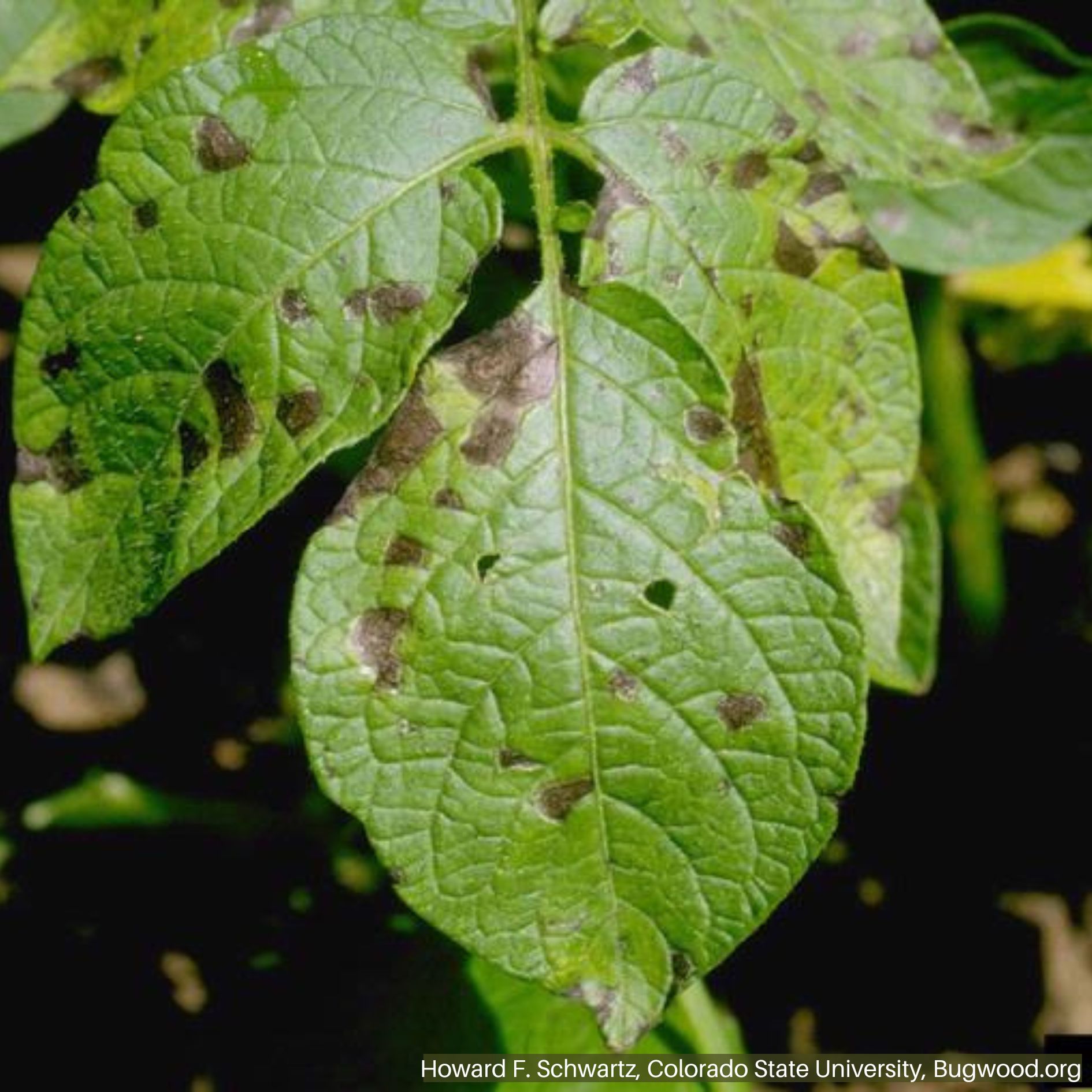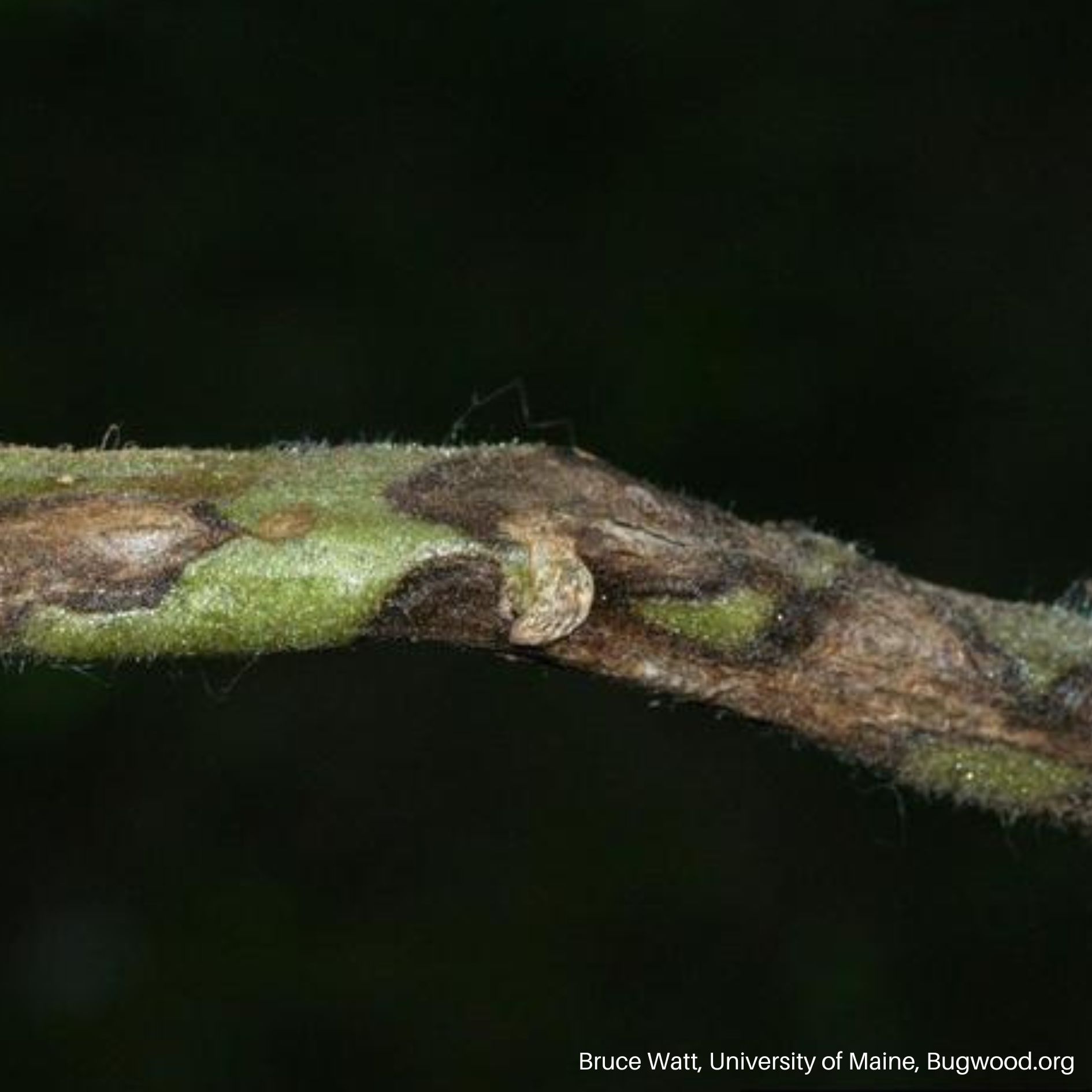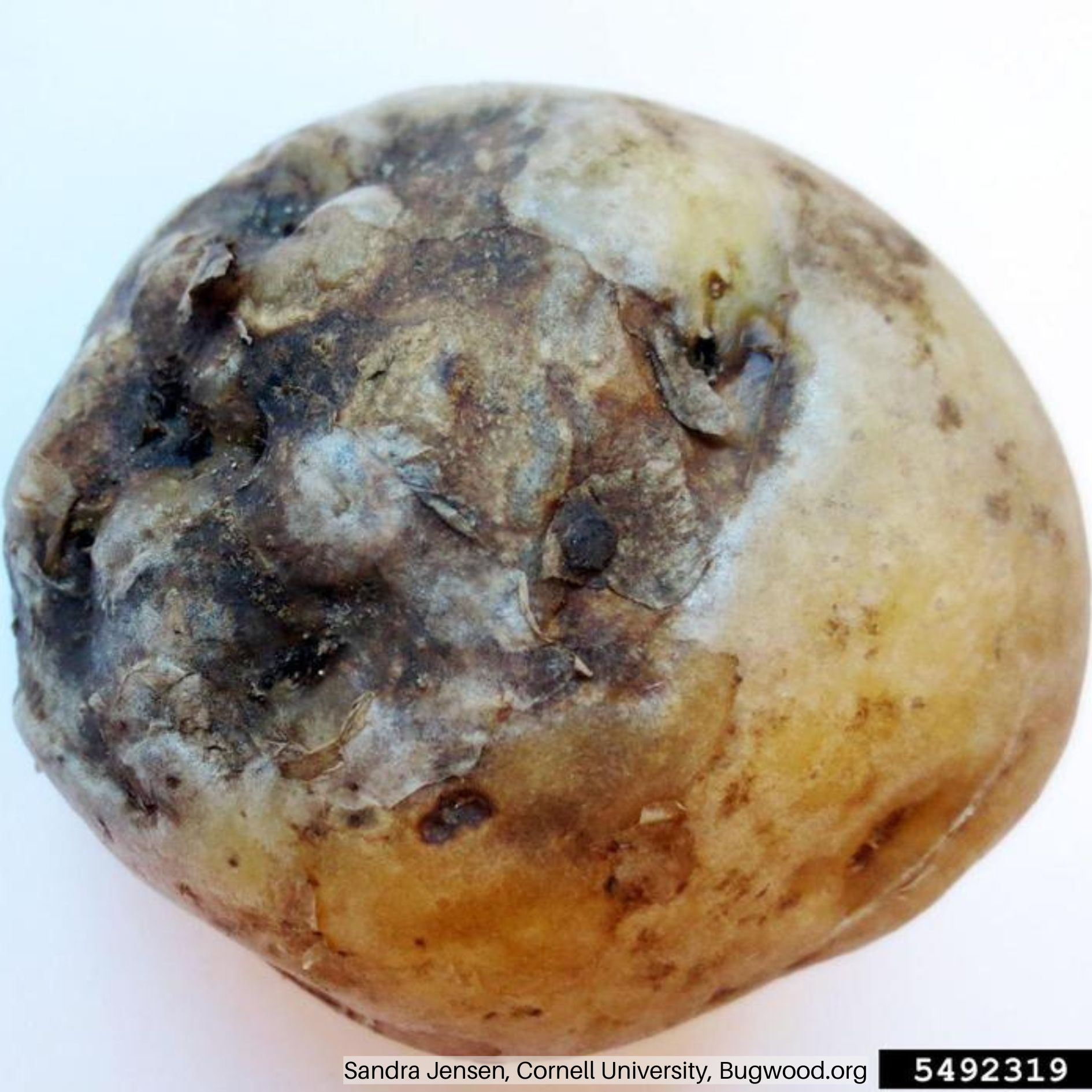Early Blight
VEGETABLE HOSTS
- Potato
- Tomato
DESCRIPTION
Early blight is a fungal disease of potatoes and tomatoes. The name, early blight, is somewhat misleading since the disease usually occurs on mature vines. Early blight may also affect tubers and fruit. The disease varies in severity every year and is most severe in years when late summer precipitation is frequent.
BIOLOGY
Early blight is caused by the fungus Alternaria solani. The fungus overwinters on debris from previously diseased plants. Airborne spores that infect new tomato and potato plants are produced on such debris and on volunteer tomato and potato plants. The disease is more serious under wet or humid conditions. The first lesions occur in the lower part of the plant where humidity is highest.
SYMPTOMS
- Early leaf symptoms begin as pinpoint brown or black spots, usually on the lower (older) leaves.
- Leaf spots are frequently surround by a yellow halo.
- Concentric rings within the enlarged lesions.
- Irregularly shaped lesions that may be somewhat angular because they are often limited by large leaf veins.
- Sunken and silvery stem lesions ranging from 1/4 to 1/2 inch in size.
- Stem lesions may coalesce to produce large infected areas.
- Stem lesions are an indication of a serious early blight outbreak in a field.
- Tomato fruit symptoms are not common in Utah, but include greenish brown to black sunken lesions (usually on the stem-end of the fruit) with concentric rings.
- Irregularly shaped potato tuber lesions that look dark colored at first and then become sunken.
- Dry and leathery tuber tissue that ordinarily remain hard and dry, but wet rot will occur if the lesion is invaded by other fungi or bacteria
- Tuber infections are infrequent in Utah.
GENERAL MANAGEMENT
Early blight control is best achieved by using several practices together. Some cultural control techniques are used to reduce the amount of initial inoculum (spores) that are present in the local environment; other practices keep plants healthy and vigorous.
- Use crop rotations. Avoid planting in the same area for 2 years.
- Use disease-free transplants or seed pieces.
- Destroy all volunteer tomatoes and potatoes.
- Plow down or destroy all debris immediately after harvest.
- Maintain plant vigor with proper nitrogen when plants flower to prevent nutrient depletion.
- Avoid sprinkler irrigation at times when the leaves would remain wet for long periods of time.
- If lesions are noted on the bottom third of the plants during the first part of August, a fungicide spray program should be initiated. Disease occurring later in the season will not cause enough damage to warrant a spray program.
Precautionary Statement: Utah State University and its employees are not responsible for the use, misuse, or damage caused by application or misapplication of products or information mentioned in this document. All pesticides are labeled with ingredients, instructions, and risks, and not all are registered for edible crops. “Restricted use” pesticides may only be applied by a licensed applicator. The pesticide applicator is legally responsible for proper use. USU makes no endorsement of the products listed in this publication.





